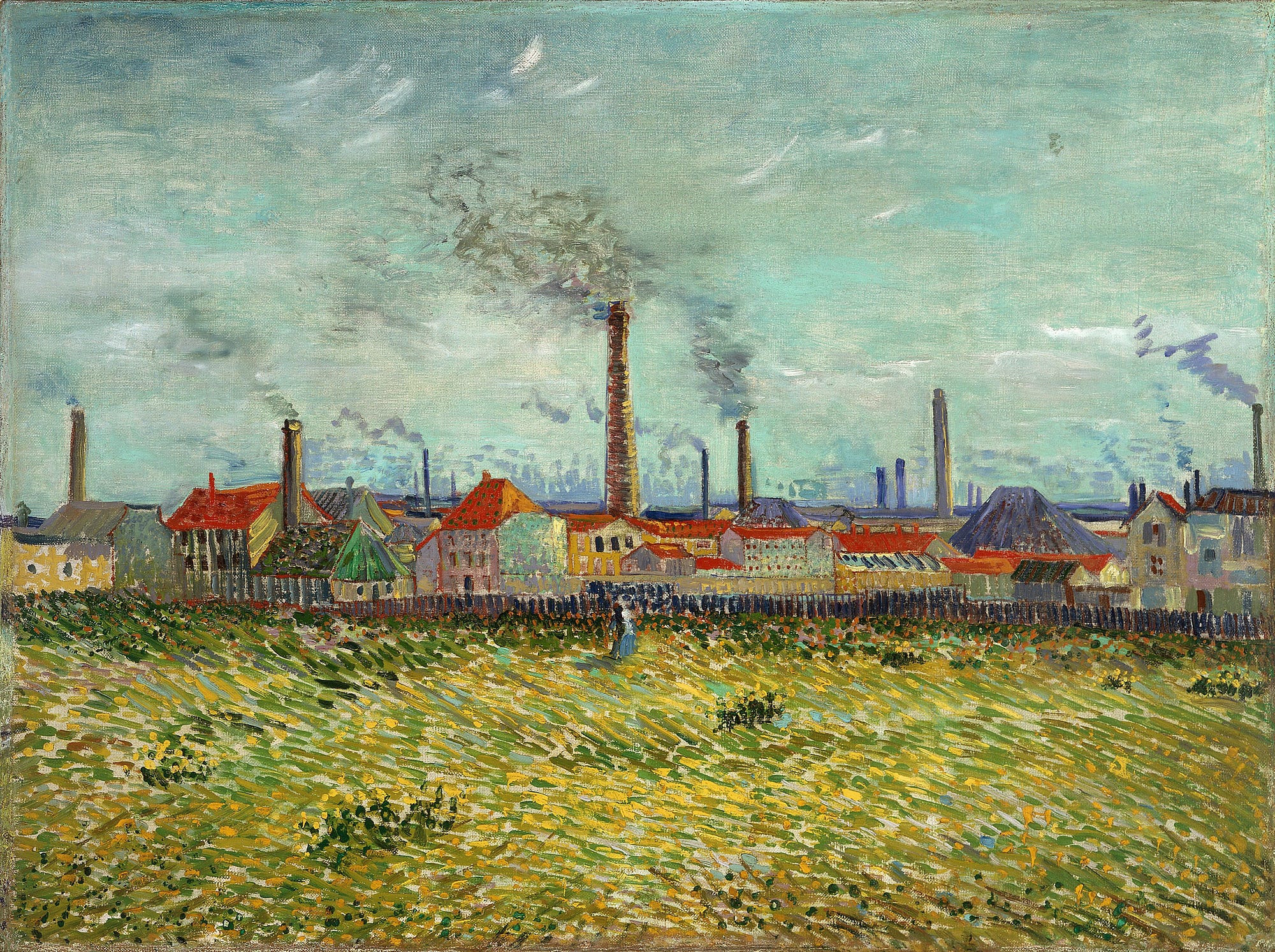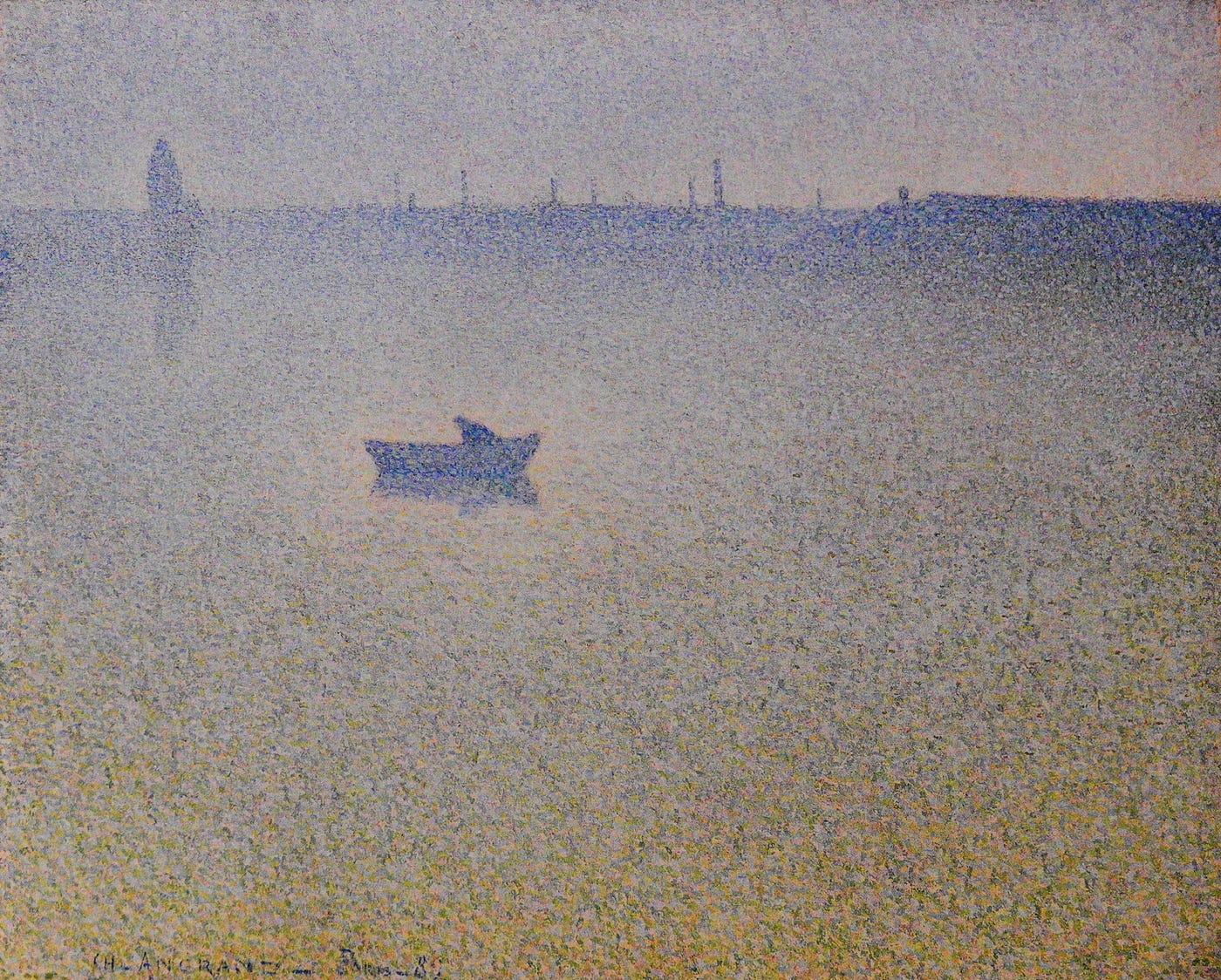How Green Ain’t Green

I’m taking the train from Chicago to St. Louis. The view from the window is green, but it ain’t green. It’s the artificial striations of cornfields, the neutered pastures of grass; it’s pastoral, not natural. It’s green, but it’s a processed green. It’s empty calories. I think of ‘going green’, and this is what it means. It’s a paint job on climate concrete.
One crop as far as you can see ain’t natural. It requires a lot of energy to keep the natural entropy back. One crop every season is abomination, the three sisters told Native Americans that. That’s why there’s behemoth trucks and tractors parked near the barns. That’s why there’s fertilizer and pesticide piled inside. It requires a whole lot of energy slaves to keep the fields looking like that. The fields are green, but they should really be black.
The carnal sin was the industrial revolution, but we forget that the agricultural revolution was also bad. Cain first slew Abel in the fields. And as punishment Yahweh said, “When thou tillest the ground, it shall not henceforth yield unto thee her strength; a fugitive and a vagabond shalt thou be in the earth.” And so soil degrades with every harvest. The modern green revolution was largely flooding the fields with fertilizer produced from natural gas. It was the discovery that we could eat fossil fuels via the Haber process. This is of course cheating and has consequences. As the Quran says about the sons of Adam:
As for the disbelievers, even if they were to possess everything in the world twice over ˹and offer it all˺ to ransom themselves from the punishment of the Day of Judgment, it would never be accepted from them. And they will suffer a painful punishment.
We seem to be bargaining with the gods and trying to pull fast ones, which historically doesn’t go well. We think we’re winning cause we do win. Our population burgeoned with the first agricultural revolution thousands of years ago and blew up with the most recent one around a hundred back. Nature looks pretty hemmed in and we feel pretty powerful. We think the gods are weak and easily manipulated by the magic spells we call science. But we don’t get it. The gods simply operate on a different timescale.
A hundred years is less than nothing biologically. Ten thousand is nothing to geology. A mere blink in the eyes of the gods. We think we’re pulling fast one and we are. It’s so quickly gone.
The latest rabbits out of the hat of infinite rabbits are green growth and renewable energy. Now we’re going to raze the Earth with an electric bulldozer and a bumper sticker that says ‘land acknowledgement’. Are the gods fooled by this, as measured by biology and geology? No. No, they are not indeed. As Tyson Yunkaporta writes, “I don’t think most people have the same definition of sustainability that I do. I hear them talking about sustainable exponential growth while ignoring the fact that most of the world’s topsoil is now at the bottom of the sea.”
People — myself included — don’t understand that sustainability requires sacrifice. “Ain’t I giving enough?” we asked, yoked heavy to the burden of capital, as much as a tractor or mule. We don’t get that we’re pulling the wrong way, we should be yoked to God, of Gods, or whatever connects you to something bigger than you. Instead we’re yoked to vanity, and that ends up in the bonfire soon enough. What we don’t get is that the only way to ‘solve’ bigger problems is to give up. To sacrifice with both faith and without expectation. How much to sacrifice? I think of Job and Jesus, or the Maya kings drawing sacred blood from their penises. Much more than we’re willing to give. That’s generally the scale of the gods. We used to know that once. Now we think we know it all.

I think about this as I take the train between the archival industrial cities of Chicago and St. Louis. I can even see it the smog peaking out the edges of Impressionist Art now. I never put these things together because I wasn’t looking. But there they are. As the train passes the manicured fields, they striate into straight lines. Rows of wheat, of corn, of whatever they are. Perfect lines flash before my eyes, stretching out to the horizon. It’s the right color but it’s the wrong shape. This green is an illusion. The only thing real is the occasional diesel smell I get in the Amtrak cabin. Both the straight lines of the rails and the cornrows of the fields leave invisible emissions in their wake. That is to say, we’re traveling to the same funeral at the end of the day.